Desis in Distress
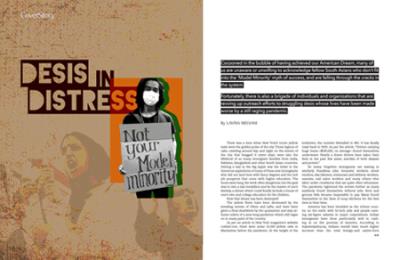
Cocooned in the bubble of having achieved our American Dream, many of us are unaware or unwilling to acknowledge fellow South Asians who don’t fit into the ‘Model Minority’ myth of success, and are falling through the cracks in the system.
Fortunately, there is also a brigade of individuals and organizations that are revving up outreach efforts to struggling desis whose lives have been made worse by a still raging pandemic.
There was a time when New York’s iconic yellow taxis were the golden pulse of the city. Those legions of cabs, crawling around day and night on the streets of the city that bragged it never slept, were also the lifeblood of so many immigrant families from India, Pakistan, Bangladesh and other South Asian countries. Driving a taxi in the Big Apple was the ticket to the American aspirations of many of these new immigrants who did not land here with fancy degrees and the rich job prospects that come with higher education. The hours were long, the work often dangerous, but the goal was to own a taxi medallion and be the master of one’s destiny, a dream which could finally include a house of one’s own and college education for the children.
Now that dream has been destroyed!
The yellow fleets have been decimated by the invading armies of Ubers and Lyfts, and have been given a final deathblow by the quarantine and stay-athome orders of a year-long pandemic which still rages on in many parts of the country.
As per an article in New York magazine’s website curbed.com, there were some 10,500 yellow cabs in Manhattan before the pandemic. At the height of the lockdown, the number dwindled to 982. It has finally crept back to 3500. As per the article, “Drivers carrying huge loans—$500,000, on average—found themselves underwater. Nearly a dozen drivers have taken their lives in the past few years, suicides of both despair and protest.”
So many forgotten immigrants are slaving in similarly thankless jobs: domestic workers, street vendors, day laborers, restaurant and delivery workers, nannies, nail salon workers and many others who labor under conditions that are quite often inhumane. The pandemic tightened the screws further as many suddenly found themselves without jobs. Rent and grocery bills became impossible to pay. Many found themselves in the lines of soup kitchens for the first time in their lives.
America has been heralded as the richest country on the earth with hi-tech jobs and people earning six-figure salaries in major corporations. Indian immigrants have done particularly well in cashing in on the promise of America. According to migrationpolicy.org, Indians overall have much higher incomes than the total foreign-and native-born populations. In 2019, households headed by an Indian immigrant had a median income of $132,000 compared to $64,000 and $66,000 for all immigrant and U.S.-born households respectively.
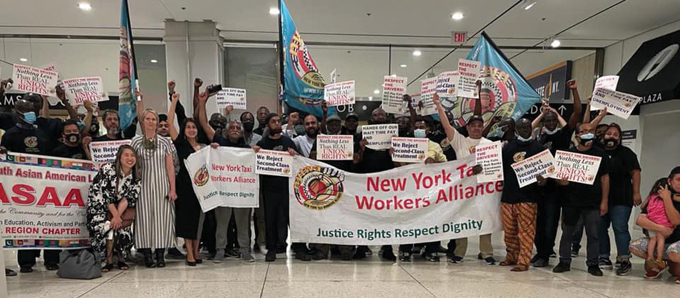
New York Taxi Workers Alliance: Battling for their survival.
Yes, there are underprivileged Indian-Americans!
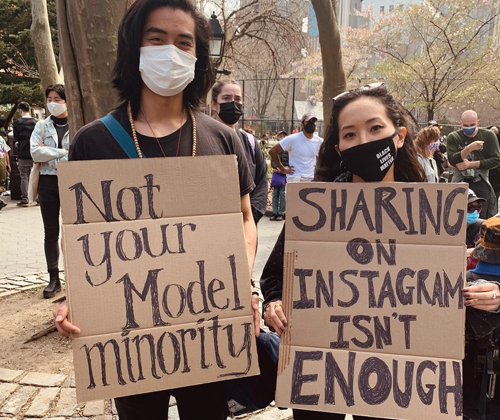 We hear of Indian-American success stories borne by the statistics above, but there are other stories to be told too. When migrants leave their homeland, they come with dreams for a better life, but these ambitious blueprints don’t always pan out.
We hear of Indian-American success stories borne by the statistics above, but there are other stories to be told too. When migrants leave their homeland, they come with dreams for a better life, but these ambitious blueprints don’t always pan out.
[Right] The youngsters in South Asian communities: Leading the charge to make a difference for underprivileged South Asians.
At least five percent of Indian-Americans are on the lower rungs of a floating population of essential workers, some of them illegal immigrants. In 2019, Indian immigrants were less likely to be in poverty (five percent) than immigrants overall (14 percent) or the U.S. born (12 percent). Now, the pandemic has pushed so many more in the distress lines of the food-insecure, the jobless and the homeless that one feels the numbers of strugglers has gone up markedly.
Meet Swarna, who faces an abusive husband at home and sexual harassment at work. She managed to get a place of her own, but her hours of work were reduced due to the pandemic and then the job disappeared altogether. She is not eligible for un-employment benefits or a stimulus check due to her immigration status and struggles daily with rent, transport and food insecurity. Her financial problems may propel her back to her abuser.
Then there is Vinod who had been the sole bread-earner for his family of four, but when he fell sick, he was unable to get any disability benefits from his job. His wife, in spite of her many attempts, could not find a job since she did not have any previous work experience and was not proficient in English. The landlord threatened to evict them since they were behind on their rent payment and finally gave them an ultimatum: settle the balance and vacate the premises.
Swarna and Vinod are real people (their names have been changed to protect their identities), but they are just two of the many South Asians who fall foul of the model minority myth. There are thousands and thousands more like them, living hand to mouth and from day to day.
Approximately 469,000 Indian-Americans were undocumented immigrants in the 2012-16 period according to Migration Policy Institute (MPI) estimates. MPI also estimated that approximately 28,000 Indian unauthorized immigrants were immediately eligible for the Deferred Action for Childhood Arrivals (DACA) program when it was introduced in 2012. However, as of March 2020, only 2,220 Indian-born individuals were among the 643,600 active participants, according to U.S. Citizenship and Immigration Services (USCIS) data. Too afraid to come into the sunlight, these illegal immigrants live shadowy lives in which they just do not exist on paper. Many, living in overcrowded basements, are too afraid to be counted in the U.S. census for fear of being deported.
As Sonal Shah, founder president of The Asian American Foundation (TAAF) noted, the Indian community is not a monolithic community. She says, “Between the highest 10 percent and the lowest 10 percent, there’s a huge disparity, and in fact, amongst all other ethnic communities, we have the largest disparities.”
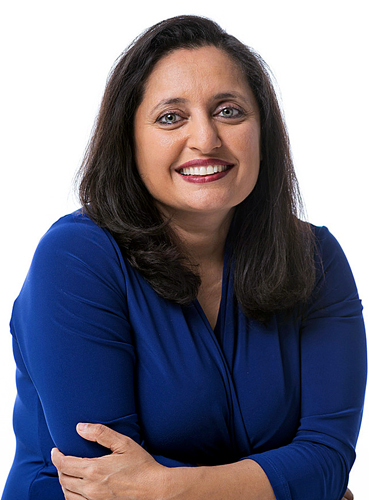
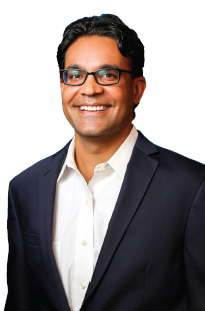 [Left] “Between the highest 10 percent and the lowest 10 percent, there’s a huge disparity, and in fact, amongst all other ethnic communities, we have the largest disparities,” says Sonal Shah, founder president of The Asian American Foundation (TAAF).
[Left] “Between the highest 10 percent and the lowest 10 percent, there’s a huge disparity, and in fact, amongst all other ethnic communities, we have the largest disparities,” says Sonal Shah, founder president of The Asian American Foundation (TAAF).
[Right] Milan Vaishnav, Director, South Asia Program at Carnegie Endowment for International Peace (CEIP) highlights the discrimination and polarization faced by many Indian-Americans that don’t fit into the narrative of affluence and success that is often attributed to the community in broad generalizations.
Several thought leaders spoke at a virtual event ‘Social Realities of Indian Americans’ which discussed the nuances of community in America. Co-hosted by Carnegie Endowment for International Peace (CEIP) and TAAF concerning a new study on the Indian-American community, it drew on the 2020 Indian American Attitudes Survey (IAAS).
Discussing many aspects of the community, Milan Vaishnav, Director, South Asia Program at CEIP noted that while the overall professional education- al financial success of the Indian American commun-ity is undisputed, there is a lot of variation and an incredible amount of inequality. The socio-econo- mic characteristic, he says, “has not inoculated them in any way from the forces of discrimination, polarization and frankly contestation over these very basic questions of identity.”
The IAAS Survey shows that one in two Indian-Americans reports being subject to some form of discrimination in the past year. The data suggests that discrimination based on skin color is the most common form of bias, while there’s also religious and gender-based bias. Muslims report the greatest degree of religious discrimination by far (39 percent), followed by Hindus (18 percent), Christians (15 percent) and believers of other faiths (nine percent). Sixteen percent of Indian-Americans report being discriminated against by virtue of their Indian heritage. Finally, five percent of all respondents report having encountered discrimination due to their caste identity.
Indeed, while the community is very successful, systemic racism and inequality are very much a part of many lives.
Champions of hope: Individuals and organizations stepping up for South Asians in distress
It is encouraging to see South-Asian Americans lead the charge in changing circumstances for their own communities. There is a sharp rise in South Asians involved in politics, law and justice. One of the leading lights is long-time activist and civil rights lawyer Vanita Gupta who was confirmed as the United States Associate Attorney General.
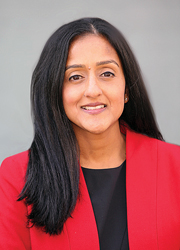 Ivy League schools have mentors to guide their students, so why not mentors for those struggling in the School of Hard Knocks? This is where some remarkable individuals and organizations have come forward. These are grassroots groups that help lift up people by their bootstraps. Most states with a sizable South Asian community have such grassroots organizations to help those who are struggling.
Ivy League schools have mentors to guide their students, so why not mentors for those struggling in the School of Hard Knocks? This is where some remarkable individuals and organizations have come forward. These are grassroots groups that help lift up people by their bootstraps. Most states with a sizable South Asian community have such grassroots organizations to help those who are struggling.
[Left] Long-time activist and civil rights lawyer Vanita Gupta’s confirmation as the United States Associate Attorney General bodes well for underprivileged immigrants.
Raksha, a Georgia-based nonprofit in Atlanta, has seen the lives of low-paid workers and women further stretched to breaking point. Aparna Bhattacharyya, Director of Raksha, says she cannot even put a figure to the number of South Asians who have suffered through the pandemic in Atlanta, “I don’t know if we would know the numbers given how many folks suffer in silence, some folks are isolated and there is stigma in asking for help.” Asked about how those already suffering from domestic abuse have been further affected by the pandemic and the economic downturn, she says, “It is complicated with domestic violence given that many people are at home with their abusers and can’t reach out. The stress around finances can create more ways for abusers to isolate and limit resources for survivors.”
Tough times have been made tougher by the pandemic for many on the lower rungs of the community who may be in paid guest situations. There are landlords, often from the same community as the tenants, who refuse to fill out W9 forms for rental assistants and often won’t even allow survivors to cook their ethnic food items due to smell and harass them. Bhattacharyya says Raksha had already been providing rental, food and emergency assistance, but in the past year the needs have amplified tremendously. “We used to fill out food pantry one to two times a year. We now have to refill it one to two times a month.
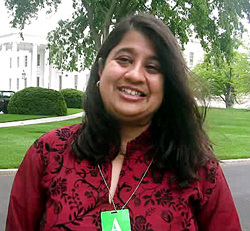 Raksha, like advocacy groups in other states, is the glue that keeps so many survivors functioning. Are things getting better for South Asian women survivors? She says, “It is hard to say. Our community is growing so the incidents are rising, but I feel that we are getting more community awareness. The pandemic really got some folks to donate who might not have normally supported our work. There is something about addressing food insecurity that really speaks to our community. I hope they will see the other systemic needs around housing, transportation and mental wellness at the same level.”
Raksha, like advocacy groups in other states, is the glue that keeps so many survivors functioning. Are things getting better for South Asian women survivors? She says, “It is hard to say. Our community is growing so the incidents are rising, but I feel that we are getting more community awareness. The pandemic really got some folks to donate who might not have normally supported our work. There is something about addressing food insecurity that really speaks to our community. I hope they will see the other systemic needs around housing, transportation and mental wellness at the same level.”
[Right] “We used to fill out food pantry one to two times a year. We now have to refill it one to two times a month,” says Aparna Bhattacharyya, Director of Raksha, the Georgia-based nonprofit looking out for struggling South Asians.
Flushing and Jackson Heights in Queens are the original immigrant landing places, and it is here that a major need exists. S. Mitra Kalita is a media entrepreneur who has taken on a new avenging avatar during the pandemic, specifically to help the black and brown communities during a difficult time. She has started URL Media, a new media company which publishes several newsletters includ-ing Epicenter NYC and has expanded to podcast, livestreams and events to reach an underserved audience. The mission is to get everyone to the table, especially the elderly and the brown populations with little tech knowledge or clout.
Says she, “The communities here have people who are Indian and Pakistani to Bangladeshi, Nepali and Tibetan. We started Epicenter because our neighborhood was very hard hit by the pandemic, and it felt like we were left to fend for ourselves and each other. I felt like someone like me with a background in journalism might be able to both amplify needs and find ways to serve them.”
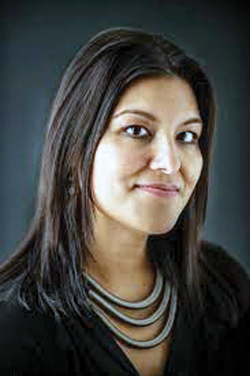 Kalita believes it’s crucial for South Asians to form connections with other minorities as they fight for economic and social justice. “Our entire existence in the U.S. is largely thanks to the work of Black Americans during the Civil Rights Movement. I also think there are many overlapping issues facing us both globally and locally,” she says. In order to offer vaccination assistance and other support, it is equally important to be connected to the larger South Asian population—Pakistanis, Bangladeshis and Nepalis. Mitra recalls, “One of the greatest successes we had resulted from Epicenter being a part of URL Media, a network of Black and Brown community news outlets. When our partner, TBN24, a Bangla livestream, mentioned us, our intake from Bangladeshi taxi drivers and restaurant workers was instant. I needed a global network of millions (Dhaka to Detroit) to find my own neighbors!”
Kalita believes it’s crucial for South Asians to form connections with other minorities as they fight for economic and social justice. “Our entire existence in the U.S. is largely thanks to the work of Black Americans during the Civil Rights Movement. I also think there are many overlapping issues facing us both globally and locally,” she says. In order to offer vaccination assistance and other support, it is equally important to be connected to the larger South Asian population—Pakistanis, Bangladeshis and Nepalis. Mitra recalls, “One of the greatest successes we had resulted from Epicenter being a part of URL Media, a network of Black and Brown community news outlets. When our partner, TBN24, a Bangla livestream, mentioned us, our intake from Bangladeshi taxi drivers and restaurant workers was instant. I needed a global network of millions (Dhaka to Detroit) to find my own neighbors!”
[Left] S. Mitra Kalita started URL Media to help underserved black and brown communities. She emphasis solidarity with African American communities by highlighting, “Our entire existence in the U.S. is largely thanks to the work of Black Americans during the Civil Rights Movement.”
According to Annetta Seecharran of Chhaya Community Development, the pandemic stimulus paychecks have provided temporary respite and a way to meet urgent needs.The organization, which is part of the Association for Neighborhood & Housing Development (ANHD), is committed to housing justice and economic well-being of South Asians and Indo-Caribbean communities in New York City.
Narbada Chhetri is the Director of Organizing and Advocacy at Adhikaar, an organization that supports the Nepali community in New York and New Jersey. It has seen the loss of many jobs, and many were let go without any pay. This workers’ organization has banded together with other groups and fought for the rights of domestic workers, nail salon workers and food delivery workers.
 Annetta Seecharran of Chhaya Community Development with New York City mayor Bill de Blasio at the renaming of a street to acknowledge Guyanese immigrants.
Annetta Seecharran of Chhaya Community Development with New York City mayor Bill de Blasio at the renaming of a street to acknowledge Guyanese immigrants.
Adhikaar realizes the power of legislation and has rallied with others for the passage of The NJ Domestic Worker Bill of Rights which would afford basic labor rights and protections to New Jersey’s 65,000 domestic workers, many of whom are experiencing wage theft, denial of breaks and lack of sick leave.
There is so much awareness now about the long history of immigrants in America and the travails they have been through. The creators of Desis Rising Up & Moving (DRUM) write, “The earliest collective presence of people of South Asian descent in the Americas is of laborers. Whether it is indentured workers in the Caribbean, Punjabi farmers on the West coast, or Bengali sailors on the East coast, they are the histories of the working-class. Now, as home workers, domestic workers, taxi drivers, street vendors, day laborers, restaurant as well as delivery workers and students, our sweat and labor make this city run.”
DRUM is looking to organize in a strategic way to use social and political systems in the 2021 election cycle to serve the working class people. And there are old organizations too doing what they do best without giving up. New York Taxi Workers Alliance, under the leadership of advocate Bhairavi Desai, is still helping its hardworking drivers steer itself out of the economic downturn.
Systematic support steps up: A reason for hope
As America lurches back to normal—or at least, the new normal—and cities are opening up at different levels, what does the future look like? South Asians are just part of the brigade of brown and black workers whose already precarious lives have been further decimated. For many, their status has gone from the middle-class strugglers to that of the homeless and the hungry.
With the nightmare of the past four years over, there is fresh hope with President Joe Biden and Vice President Kamala Harris in the White House and a team that is full of like-minded people. Biden’s tweet was very different from that of his predecessor: “Let me be clear: No one should have to choose between a paycheck and taking care of themselves or their loved ones. The American Families Plan will finally provide up to 12 weeks of paid family and medical leave for every American.”
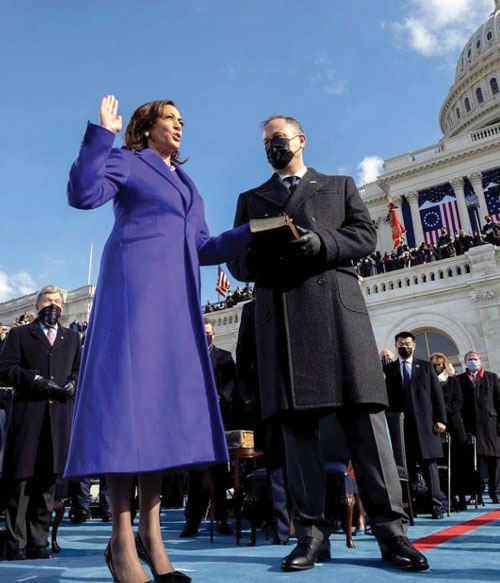
As NPR reported about the Biden initiative, “At the center of that agenda is his newly unveiled American Families Plan, a $1.8 trillion proposal designed to lower the cost of childcare, provide billions for paid family leave, and expand access to education. Biden is also seeking to pass a $2 trillion infrastructure plan that he calls a “once-in-a-generation” investment in the United States.”
Vice President Kamala Harris has also shown a promising future to those struggling when she said, “A four-year college degree isn’t the only path to success. For some, it’s a technical college or a training program, and for some it’s an apprenticeship. That’s why the American Jobs Plan invests in work- force development, including creating one to two million new registered apprenticeships.”
The will is certainly there, and one hopes that all these become a reality. Representative Pramila Jayapal, speaking of the Protect the Right to Organize (PRO) Act, has said, “We can’t allow workers to be called essential but treated as expendable. Every worker deserves the right to organize for good wages, fair benefits and an equal voice on the job.”
[Top] Vice President Kamala Harris, along with President Joe Biden, heralds a new era of aggressive federal support for underprivileged communities.
There is heightened awareness now, especially after George Floyd’s murder, that there is deep inequity in policing, medical care, housing, education and jobs—in fact, in American life itself. Slowly the tide seems to be turning. Muslims, vilified and ostracized, are finally getting their place in American society. The Senate voted to confirm Zahid Quraishi as a U.S. District Judge for the District of New Jersey, making him the first Muslim American federal judge in U.S. history.
For the wageworkers, the strugglers, and those on the bottom rungs of the ladder, there is a new awareness of their rights and also an emerging confidence in their own possibilities. The American Dream may be battered and bruised, it may have been put on a ventilator, but it is by no means dead. It is being resuscitated by the dreamers and their inheritors, and will surely be celebrated once again.
Lavina Melwani is a writer for several international magazines and blogs at Lassi with Lavina (www.lassiwithlavina.com). Follow @lavinamelwani
Enjoyed reading Khabar magazine? Subscribe to Khabar and get a full digital copy of this Indian-American community magazine.
blog comments powered by Disqus










